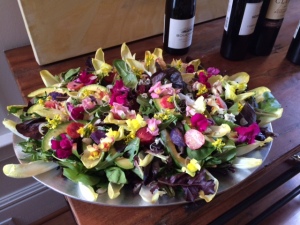by Rebecca Berg Manor
Back in 1984, when Beautiful Feet Books was just starting out, there were very limited resources available for home educators, so we had to start from scratch. One tool that we always found to be a reliable standby was the humble composition notebook. It served students as a creative outlet, journal, portfolio, and much more. In the past 32 (!) years we've never strayed from recommending that students keep notebooks as they progress through our studies so when I came across this quote on Instagram, I had to share it.
"No other learning tool has more purity of approach than a blank notebook. Like the artist's canvas, it has the creative potential of becoming anything the author wishes to portray. It's natural form makes it adaptable to any task or learning situation. The content, rather than being dictated by a pre-set curriculum, is determined by the family, meeting their unique and individual needs. When the development of learning tools becomes the focus rather than merely gaining content, then the family is free to use all of life as their curriculum." Marilyn Howshall
First, just as Howshall so eloquently states, notebooks are tools. We never offered worksheets for our
notebooks because we believe in the freedom and promise of a blank sheet of paper. Our guides all contain writing prompts to help you begin and carry on the notebooking process but it's important to push aside the workbook/worksheet mentality while notebooking. This begins with the notebook itself. Choose one that your child likes. Many people use a sewn-bound notebook and only put their best work in it. This approach results in a great portfolio of the student's work. Others prefer a spiral notebook. This can be useful for removing pages if necessary. I love these notebooks pictured to the right. Moleskines, three-ring binders, they're all great! Use the format that works best for your child.
Secondly, we provide free print-outs for many of our study guides (available here) and these are great for adding color to student notebooks along with mapping activities to incorporate geography. When using these printouts, let your children's creativity go wild. If they prefer using water colors to colored pencils, or if they want to draw their own illustrations, these assignments are opportunities for your children to exercise creative license! It can be so tempting to want our children to create brag-worthy portfolios but these are their projects and should reflect their aesthetic.
Third, notebooks are for recording. After your student has had fun creating/drawing/painting/sketching, this is the time for labeling and recording. Study after study shows that writing things out by hand reinforces memory and information processing. So, while your student may not find this to be his favorite activity of the day, it is important. This activity incorporates handwriting, composition, and reasoning, so remind your students that their accomplishing a lot in these assignments. If your children are very young, feel free to label the pictures for them until they are proficient enough in writing to do it themselves. While it is important that written work be done, it's also good to make it as enjoyable as possible for children who find it challenging. "Short and simple" is the key for children who find this extra challenging. Some students will love writing in their notebooks, others will not. Do not worry too much about the students who don't find it enjoyable. As their appreciation for story and language grows through exposure to great literature, their abilities to write will expand.
Last, provide good materials. When a student is creating, it's very helpful to have colored pencils that blend and aren't so hard that they make everything look messy. It's wonderful to have watercolors that are saturated with color and good paper to use them on. It makes for a much more pleasant experience if your students have tools that facilitate creative expression, not hinder it.
For inspiration on notebooking, check out these blogs: Jodi Mockabee, kinderfarm homeschool, and our Instagram (where we're constantly posting pictures from homeschooling mommas!).
We hope your students enjoy the creative outlet provided by notebooking and grow in the critical reasoning and processing that the discipline fosters. And we LOVE seeing your children's notebook pages, so snap a picture and post it on our Facebook page or Instagram. And tag it with #backtoschoolwithBFB for a chance to win $100.00 to spend on our website.
Notebook photo credits: Reflections from Drywood Creek
Don't forget to enter our Back-to-School with BFB contest. Details here.












